A lot of what we see going on in nature we take for granted. Sure, we may marvel at the beautiful sunset; check out some big or cool-shaped clouds every once in a while, but the real awesomeness of the world around us usually tends to go unnoticed.
And that’s a shame because if you know where and when to look, you’ll see that nature can do things way more impressive than you could have ever imagined.
Fire Rainbow
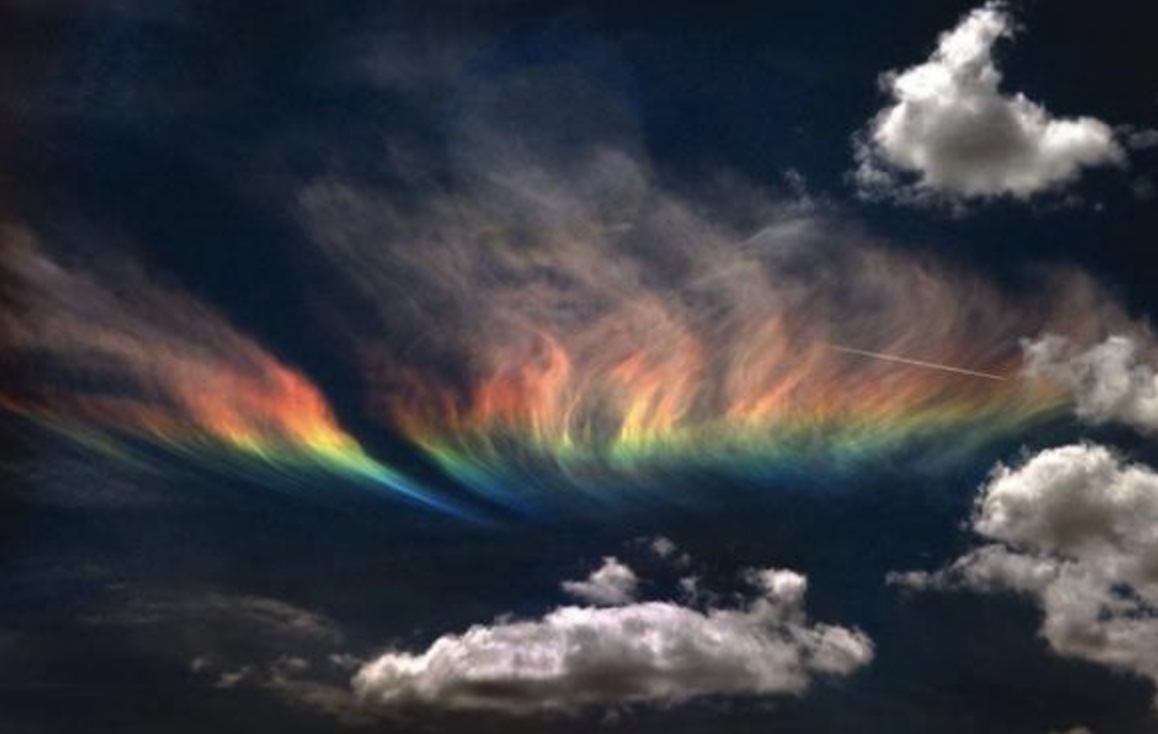
Photo Credit to strangesounds.org
One of the rarest of phenomena you might experience in your lifetime. During the summertime, if you’re very lucky, you may notice a cloud in the sky that looks just like a rainbow. These so-called “fire rainbows” are actually known as circum-horizontal arcs and can occur when the sun has risen higher than 58° in the sky. For those living in the mid-latitudes, the best chance to see this phenomenon is in the middle of summer. One could have a couple of chances a year to notice them. So, look up!
Sun Dogs
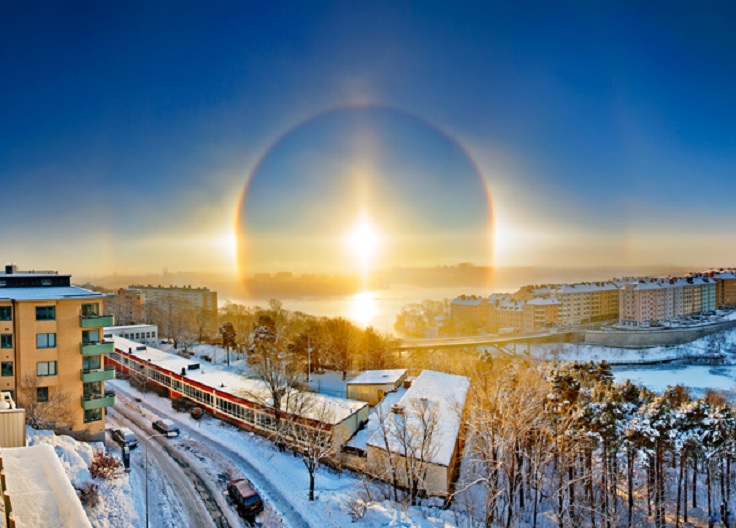
Photo Credit to sott.net
A Sun dog, also called mock sun or parhelion, is an atmospheric optical phenomenon appearing in the sky as luminous spots 22° on each side of the Sun and at the same elevation as the Sun. Usually, the edges closest to the Sun will appear reddish. Other colors are occasionally visible, but more often the outer portions of each spot appear whitish. This concentrated patch of sunlight will not last long and is one of the most beautiful things you can experience if lucky enough, once in a lifetime.
Mammatus Clouds
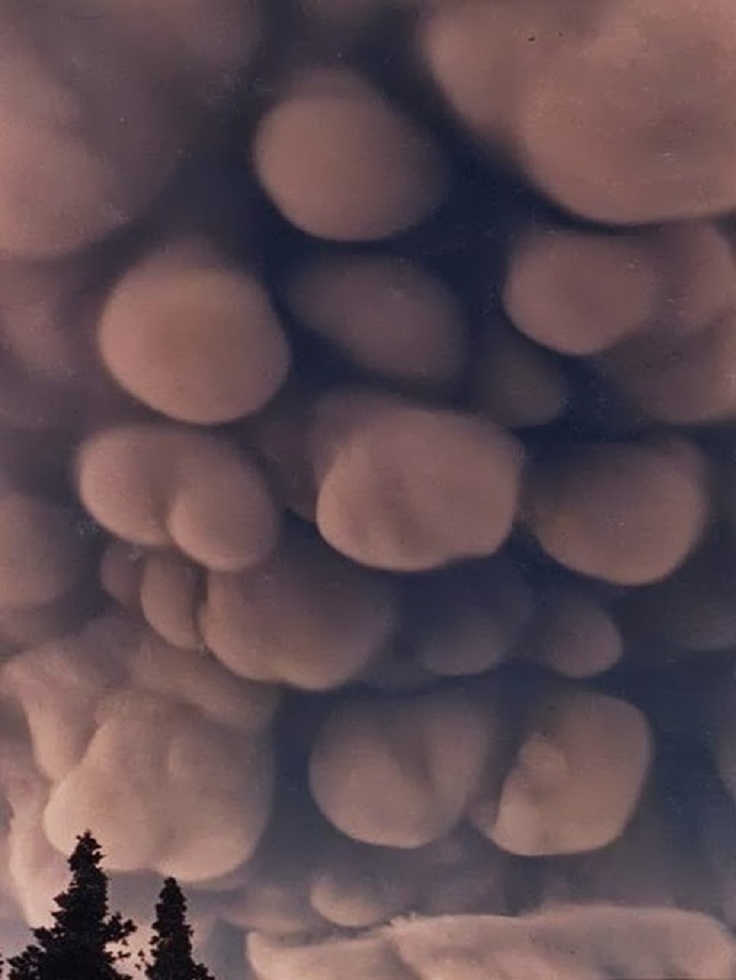
Photo Credit to flickr.com
Mammatus clouds are pouch-like cloud structures and a rare example of clouds in sinking air. This phenomenon usually happens after a big and great thunderstorm has passed and not forming a tornado as most of us might have heard. Because of its high concentration of precipitation particles (ice crystals and water droplets), the saturated air is heavier than the surrounding air and sinks back towards the earth. It feels like the sky is falling on your head and incredible if the rays of sunshine manage to bully their way through it. Unique experience.
Water Spout
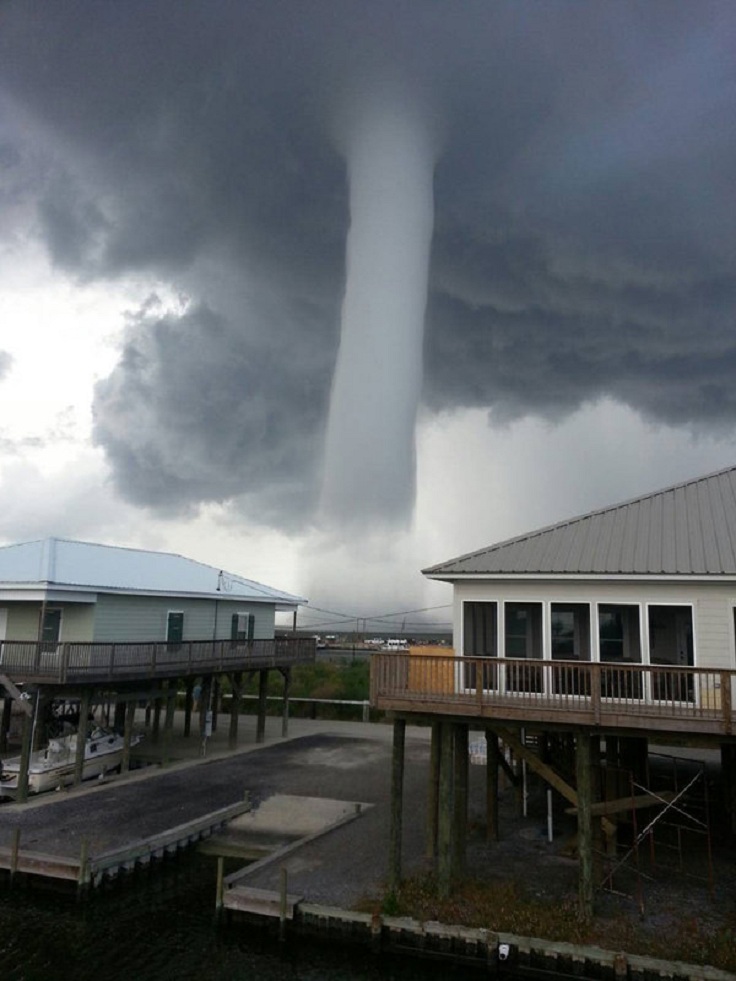
Photo Credit to pinterest.com
A waterspout is a small-diameter column of rapidly swirling air in contact with a water surface. Waterspouts are almost always produced by a swiftly growing cumulus cloud and can resemble a tornado, whirlwinds, or firestorms. They may evolve into many different shapes and often occur in a series, called a waterspout family, produced by the same upward-moving air current. It will not be advised to be anywhere near one and one might wish to go the opposite way.
The Green Flash/Ray
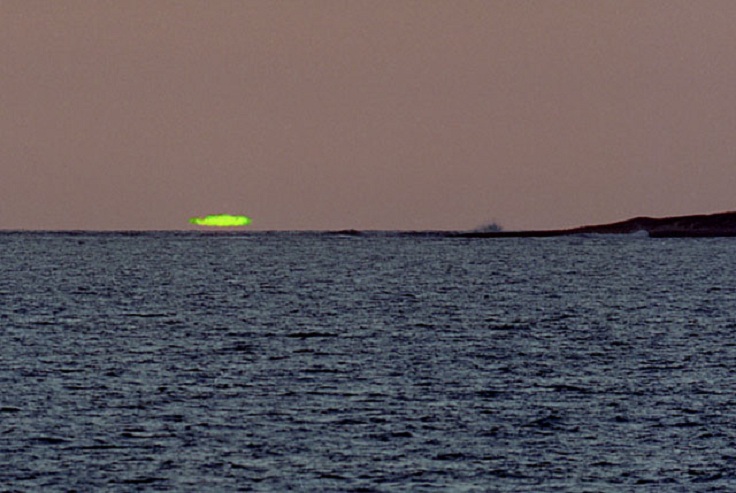
Photo Credit to conchscooter.blogspot.com
This is where you cannot afford to blink. And fear not, it isn’t an invasion of the little green men. Not once so stay alert. The moment is fleeting and lasting a mere second or so. It is so easily missed by the untrained spectator. Depending on variables like wind, haze, clouds, and the observer’s vantage point, it is often not visible at all to the naked eye. But green flash enthusiasts say your chances of seeing one are about as good along the West Coast as anywhere. Nature has its ways to surprise us in ways we cannot begin to comprehend. These phenomena are with us letting us know how beautiful life is.
Light Pillars
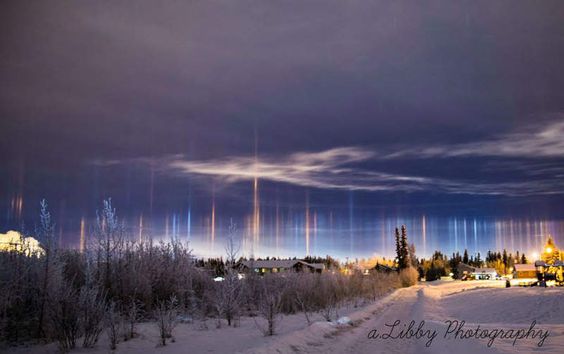
Photo Credit to wordlesstech.com
These columns of lights apparently beam directly upwards from unshielded (and wastefully polluting) lights sometimes are visible during very cold weather. Plate-shaped ice crystals, normally only present in high clouds, float in the air close to the ground and their horizontal facets reflect light back downwards. The pillars are not physically over the lights or anywhere else in space for that matter. Like all halos, they are purely the collected light beams from all the millions of crystals that just happen to be reflecting light towards your eyes or camera.
Volcano Lightning (Dirty Thunderstorm)

Photo Credit to io9.com
Heaven occasionally looks seemingly angry and those phenomena do not disappoint. Volcanic lightning arises from colliding, fragmenting particles of volcanic ash and sometimes ice, which generates static electricity within the volcanic plume, leading to the name of “dirty thunderstorm”. Moist convection and ice formation also drive the eruption plume dynamics and can trigger volcanic lightning. One can be fortunate enough to see it with their own eyes let alone take a picture of this beautiful and dramatic occasion right in front of your eyes.
Lenticular (UFO) Clouds
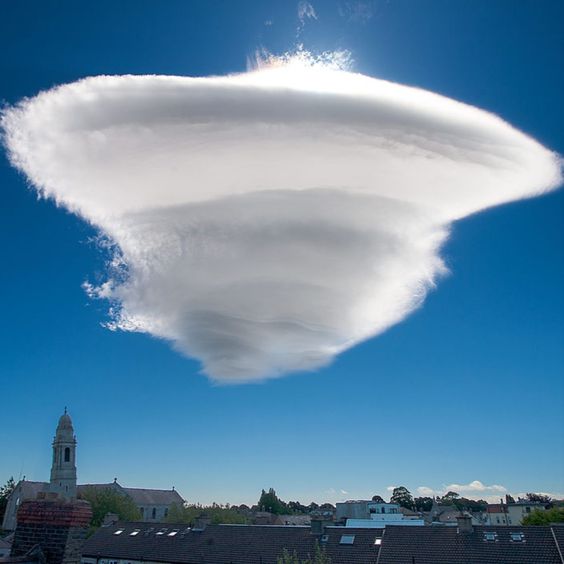
Photo Credit to discvr.blog
These UFO-shaped clouds aren’t real UFOs. Fear not. These are instead lens-shaped clouds typically formed where stable moist air flows over a mountain or a range of mountains. When this happens, a series of large-scale standing waves may form. These clouds can appear and disappear very quickly, so it can be rather difficult to get to experience their sights. These cloud formations can be seen and admired all over the world, especially in mountainous areas.
Shimmering Shores
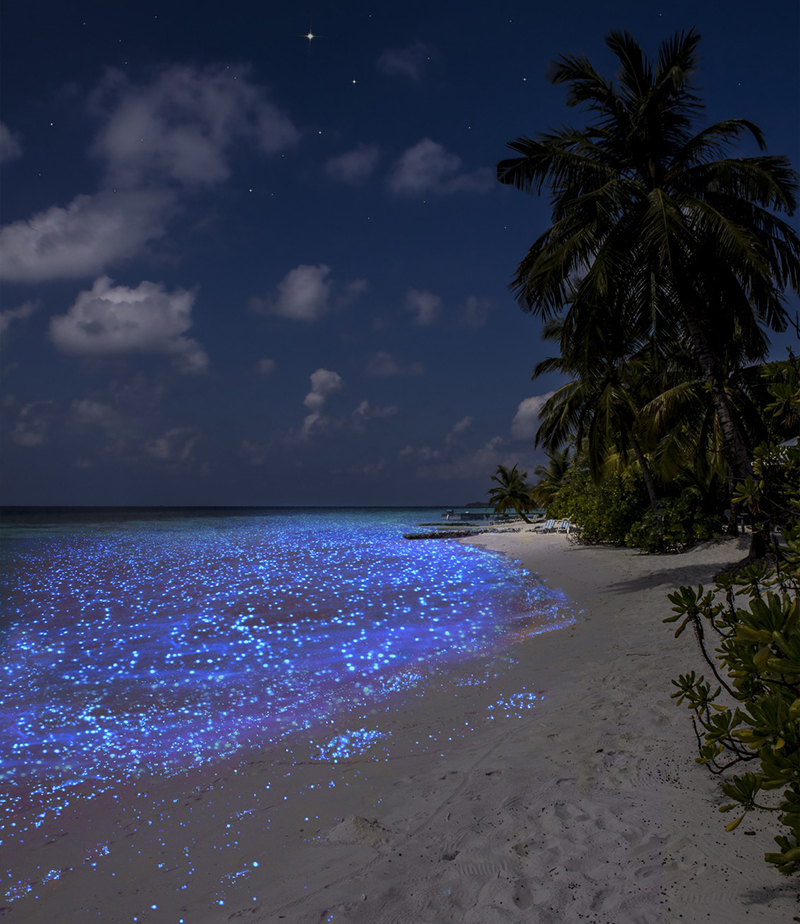
Photo Credit to luxuo.com
Vaahdoo in Atoll, Maldives, is a natural phenomenon, scientifically known as bioluminescence, a process that emerges when plankton is in contact with oxygen and unleashes a chemical reaction, caused by an enzyme named luciferase. This is due to the oxygen that oxidizes a protein when it is in contact with luciferase and moves. It later produces a reaction in which the chemical energy becomes light pollution. The reason in which the blue lights are appreciated on the shore of the beach, in the footsteps of the sand, or even the waves plowing by the surfers. This sea of stars is most definitely worth a detour.
Northern Lights (Aurora Borealis)

Photo Credit to gizmodo.com
We could not end our Top 10 without the special mention of the words Aurora and Borealis. The bright dancing lights are in fact collisions between electrically charged particles from the sun that enters Earth’s atmosphere. They are very often seen above the magnetic poles of both the northern and southern hemispheres. Auroral displays appear in many colors although pale green and pink are the most common. Shades of red, yellow, green, blue, and violet have been reported. The lights appear in many forms from patches or scattered clouds of light to streamers, arcs, rippling curtains, or shooting rays that light up the sky with an eerie glow. Pack your Alaskan winter clothes and head to a magical one-of-a-kind, most beautiful moment ever.



